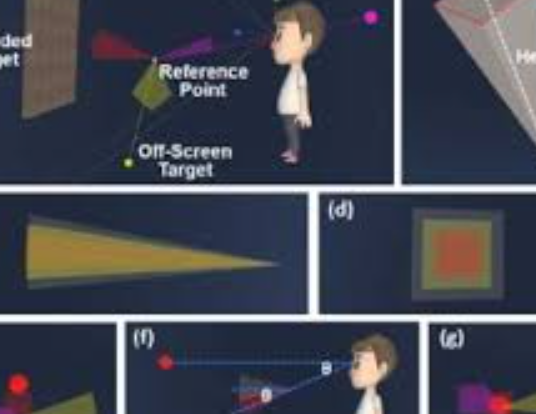Design and Evaluation of Visualization Techniques of Off-Screen and Occluded Targets in Virtual Reality Environments
PubDate: March 2019
Teams: Xi’an Jiaotong-Liverpool University
Writers: Difeng Yu; Hai-Ning Liang; Kaixuan Fan; Heng Zhang; Charles Fleming; Konstantinos Papangelis

Abstract
This research explores the design and evaluation of visualization techniques of targets that reside outside of users’ view and/or are occluded by other elements within a virtual reality environment (VE). We first compare four techniques (3DWedge, 3DArrow, 3DMinimap, and Radar) that use different types of visual elements to provide direction and distance information of targets. To give structure to their evaluation, we also develop a framework of four tasks (one for direction and three for distance) and their assessment criteria. The results of the first study show that 3DWedge is the best-performing and most usable technique. However, all techniques, including 3DWedge, have poor performance in dense scenarios with a large number of targets. To improve support in dense scenarios, a fifth technique, 3DWedge+, is developed by using 3DWedge as its foundation and including additional visual elements that are derived from the other three techniques which are shown to be useful. A second study is conducted to evaluate the performance of 3DWedge+ in relation to the other techniques. The results show that both 3DWedge and 3DWedge+ are significantly better in distinguishing user-to-target distance and that 3DWedge+ is particularly suitable for dense scenarios. Based on these results, we provide a set of recommendations for the design of visualization techniques of off-screen and occluded targets in 3D VE.
